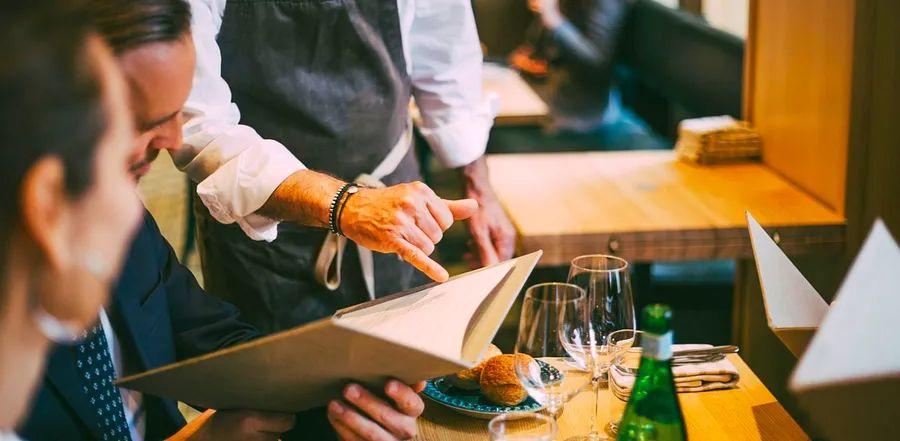Common Dining Mistakes You Might Be Making at Restaurants

Dining out at high-end restaurants isn't something most of us do frequently. It’s easy to overlook the finer points of fine dining etiquette and custom. Luckily, chefs and restaurant professionals have shared valuable tips on how to order like a pro, the best times to visit, and how to pick the right place. Based on insights from a detailed piece in The Guardian, as well as personal experiences, here are six common errors you may be making at restaurants—and how to avoid them.

Image Source: Maskot/Getty Images
1. Failing to Review the Menu Beforehand
Always check the menu first. If the restaurant has an extensive menu, take note of how busy it is. A large variety of dishes means the kitchen should be turning over ingredients quickly. As Angela Hartnett, chef at London's Michelin-starred Murano, puts it, 'If the place is relatively empty, you have to question how they keep all that stock fresh.'
Often, the best restaurants keep their menus simple, offering only a few dishes they know they can execute perfectly. A shorter menu isn’t a sign of pretension—it’s a promise of quality. That said, some cuisines like Middle Eastern mezze or Mediterranean tapas require a variety of options, so don’t be surprised by a longer list in those cases.
Reviewing the menu ahead of time also ensures you're choosing dishes within your budget, which can enhance your overall dining experience. Personally, I like to read menus days before I dine, so I don’t feel pressured to make a decision while chatting with friends.
2. Skipping Early Dining Times
Don’t underestimate the benefits of early dining. Whether it’s a 12 p.m. or 6 p.m. reservation, early sittings are often the best. The staff are refreshed and energetic, the kitchen is less rushed, and you’ll get more attentive service. Plus, eating earlier means you’re more likely to enjoy your meal without feeling rushed—and you’ll have time to digest before heading to bed.
Chef and restaurateur Dave Strauss shared with the Guardian, 'The best time to dine is early, when the kitchen is calm and the first dishes are served. Guests may not notice, but the 1 p.m. and 7:30 p.m. rushes are usually chaotic behind the scenes.'
3. Ignoring Local Geography When Ordering
You’ve likely heard Anthony Bourdain’s advice: 'Never order fish on a Monday.' His reasoning was that fish delivered on Friday could sit too long and lose its freshness by the time Monday rolls around.
However, context matters. In a coastal city with a strong seafood trade, fish served on a Monday may be just as fresh as it would be any other day. The key is understanding the location and how it affects the ingredients available.
This principle applies to more than just fish. Always consider your location, the region's local specialties, and what’s in season. Let these factors guide your meal choices, or ask the server for recommendations based on local favorites.
4. Not Asking the Server for Suggestions
A knowledgeable server can offer insights about the menu that you might miss on your own. Don’t hesitate to ask for their recommendations, especially if the restaurant has a signature dish or if they can suggest something based on your tastes. Stay open to their ideas—you could end up discovering a new favorite you weren’t expecting.
5. Ordering Ground Beef That’s Undercooked
Opting for a rare or medium-rare beef burger at a restaurant carries some risk. As highlighted by Time, undercooked ground beef can harbor food-borne illnesses. A 2013 CDC study found that many restaurants unknowingly prepare ground beef in ways that increase the chances of undercooking or cross-contamination. If you have doubts about the kitchen's practices, it’s safer to go with a well-done option.
6. Skipping the Tip
Tipping is a crucial part of restaurant culture in North America, where it often makes up a significant portion of a server’s income. Unfortunately, tipping has shifted from being a simple way to reward good service to a necessity for helping servers earn a living wage. In the U.S., a 15-20% tip is standard, with higher amounts for exceptional service.
If you're dissatisfied with your dining experience, consider speaking with the manager or sending an email before opting to withhold a tip. While servers are the most visible staff, poor service may be the result of issues behind the scenes, and most managers will appreciate the chance to address your concerns.

1

2

3

4

5
Evaluation :
5/5